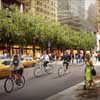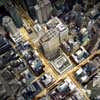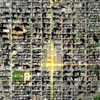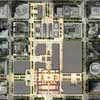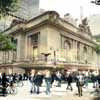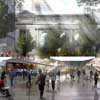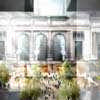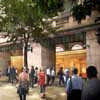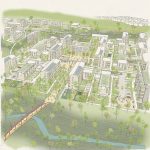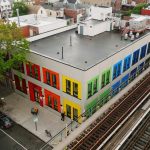Grand Central Terminal New York City, Manhattan rail hub vision, NYC transport architecture images
Grand Central Terminal Vision, New York
Manhattan Building Proposal, NY, USA design by Foster + Partners architects
Oct 19, 2012
The Next 100 – Foster + Partners re-imagines Grand Central Terminal for 2013 Centenary
Grand Central Terminal Manhattan
19 October 2012 – Norman Foster presented proposals for a masterplan to bring clarity back to Grand Central Terminal at The Municipal Art Society of New York’s annual Summit in New York last night.
Grand Central Terminal is one of New York’s greatest landmarks and contains perhaps the city’s finest civic space. However, over time it has become a victim of its own success. A building designed to be used by 75,000 people per day now routinely handles ten times that number with up to a million on peak days.
The result is acute overcrowding; connections to the rail and subway lines beneath the concourse are inadequate; and the arrival and departure experience is poor. Added to that, the surrounding streets are choked with traffic and pedestrians are marginalised. The rapid growth of tall buildings in the vicinity has all but consumed the Terminal.
Within the station, the proposal creates wider concourses, with new and improved entrances. Externally, streets will be reconfigured as shared vehicle/pedestrian routes, and Vanderbilt Avenue fully pedestrianised. The proposal also creates new civic spaces that will provide Grand Central with an appropriate urban setting for the next 100 years.
The 42nd street entrance to the south, where access is severely constrained, will be widened to fill the entire elevation by using existing openings, thus greatly easing accessibility. The access via tunnels on the northern approach from Park Avenue will be rebalanced in favour of pedestrians by creating grander, enlarged underground spaces through the Helmsley building.
Lexington Avenue to the east will be tree-lined with wider sidewalks and will benefit from more prominent and enhanced tunnel access to Grand Central Terminal. The idea already mooted to pedestrianise Vanderbilt Avenue to the west would be extended. The street would be anchored to the south by a major new enlarged civic space between 43rd Street and the west entrance to the Terminal and to the north by a plaza accommodating new entrances to the East Side Access lines. Trees, sculpture and street cafes will bring life and new breathing space to Grand Central Terminal.
At platform and concourse levels where congestion is particularly acute for travellers on the 4, 5, 6 and 7 lines, we will radically enlarge the connecting public areas, to address the huge increase in passenger traffic in the last 100 years. This will transform the experience for arriving and departing commuters and passengers. A generous new concourse will be created beneath the west entrance plaza on Vanderbilt Avenue connecting directly into the main station concourse.
This visionary masterplan with its focus on pedestrians and travellers will allow Grand Central Terminal to regain the civic stature that it deserves as a major New York landmark and an appropriate twenty-first century transport hub.
Lord Foster said:
‘The Municipal Arts Society’s call to study the Next 100 years of Grand Central Terminal in the wider context of the city and its public realm represents an important and welcome debate that will help shape the future form of the city. The quality of a city’s public realm reflects the level of civic pride and has a direct impact on the quality of everyday life. With the advent of the Long Island Rail Road East Side Access, along with the plan to re-zone the district, there has never been a better opportunity to tackle the issues of public access and mobility around one of the greatest rail terminals in the World.’
Grand Central Terminal New York – Further Information
• This study was undertaken for ‘Grand Central … The Next 100,’ The Municipal Art Society of New York’s design challenge for the future of the public realm around Grand Central Terminal. Three firms of architects were invited to rethink the public spaces in and around the Terminal for presentation at the third annual MAS Summit for New York City on 18 October 2012. February 2013 marks the 100th birthday of Grand Central Terminal designed by Warren & Wetmore and Reed & Stem on 42nd Street and Park Avenue
• The Municipal Art Society of New York has led New York City’s livability movement since 1893. MAS’s mission is to advocate for public policies, private sector practices, individual agency and community engagement for a resilient built environment that encourages our city’s economic vitality, cultural vibrancy, environmental sustainability and social diversity. For more information visit http://mas.org/.
• This study has been informed by several projects by Foster + Partners where we have successfully applied our philosophy for the regeneration of the public realm such as London’s Trafalgar Square pedestrianisation, the extension of Hong Kong’s Statue Square under the Hongkong Bank and the civic setting for the Roman temple and the Carre d’Art in Nimes. In Stockholm implementation of the Slussen masterplan to regain the balance between roads, cars and pedestrians in the heart of the city is about to begin.
• The Foster + Partners study was carried out with transport consultant MIC Mobility in Chain headed by senior partner Federico Parolotto.
• Norman Foster will present our plans for the redevelopment of 425 Park Avenue for L&L Holding and Lehman Brothers Holdings Inc. to the MAS Summit on Friday 19 October
Grand Central Terminal Building Manhattan images / information from Foster + Partners
Grand Central Station New York
Oct 19, 2012
Grand Central Terminal New York
SOM Presents Vision for Grand Central Terminal
19 October 2012, New York, NY – Skidmore, Owings & Merrill LLP (SOM) presented its vision for “Grand Central’s Next 100” yesterday at the Municipal Art Society of New York’s third annual Summit for New York City. Led by partners Roger Duffy, FAIA, and T.J. Gottesdiener, FAIA, SOM’s design transforms the public spaces around Grand Central Terminal, creating new pedestrian corridors for increased circulation and visualizing innovative options for new public amenities.
The Municipal Art Society (MAS) challenged SOM to re-think the public spaces in and around Grand Central Terminal in celebration of the landmark’s centennial. The design challenge coincides with a rezoning proposal from the New York City Department of City Planning, which, if approved, would allow the development of new office towers in the area around Grand Central, thereby increasing the density around the station exponentially. The proposed zoning would also require developers to donate to a fund that would make improvements to the infrastructure in the area, including additional access points to the subway platforms and a pedestrian mall on Vanderbilt Avenue. Along with Foster + Partners and WXY Architecture + Urban Design, SOM was one of three architecture firms invited by MAS to present ideas about the future of Grand Central Terminal’s public realm.
SOM’s vision proposes three solutions, all of which provide improvements – both quantitative and qualitative – to the quality of public space around the station. The first solution alleviates pedestrian congestion at street level by restructuring Privately Owned Public Spaces (POPS) to create pedestrian corridors through multiple city blocks, connecting Grand Central to nearby urban attractors. The second is a condensing of the public realm through the creation of additional levels of public space that exist both above and below the existing spaces. These new strata would be funded privately but under public ownership – Privately Funded Public Space (PFPS). The third proposal creates an active, 24-hour precinct around Grand Central Terminal in the form of an iconic circular pedestrian observation deck, suspended above Grand Central, which reveals a full, 360-degree panorama of the city. This grand public space moves vertically, bringing people from the cornice of Grand Central to the pinnacle of New York City’s skyline. It is a gesture at the scale of the city that acts both as a spectacular experience as well as an iconic landmark and a symbol of a 21st-century New York City.
“Throughout the history of New York City, urban growth has been matched by grand civic gestures,” says Roger Duffy, Design Partner of SOM. “This balance between growth and civic response can be seen in examples such as the Commissioners’ Plan of 1811 which led to the gridded parceling of land, two zoning resolutions which recognized the potential for private development to shape the public realm and the creation of grand public place making such as Grand Central Terminal and the public parks of New York City. With the Department of City Planning’s proposed up-zoning of East Midtown and the anticipated completion of East Side Access in 2019, the city prepares itself for a new phase of urban growth. A consequence of this imminent growth in population density will be an increased demand for public space.”
Grand Central Terminal Building New York information from SOM
Location: Grand Central Terminal, New York City, USA
New York City Architecture
Contemporary New York Buildings
NYC Architecture Designs – chronological list
New York City Architecture Tours by e-architect
NYC Buildings
Contemporary NYC Building Designs – recent architectural tower selection below:
Times Square New York – interactive heart installation : BIG ♥ NYC
Comments / photos for the Grand Central Terminal New York building design by Foster + Partners architects page welcome.

